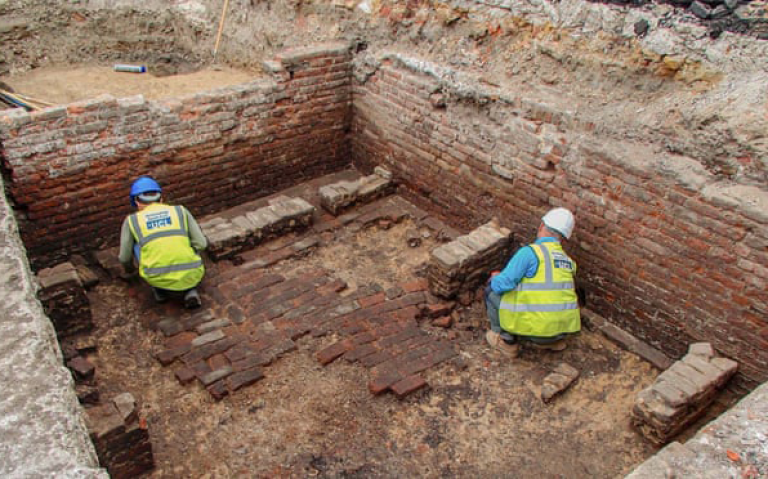
The Museum of London said Wednesday that an archaeological dig had uncovered part of the gravel yard and gallery walls of the 435-year-old Curtain Theatre in Shoreditch. The site is situated behind a pub on a site marked for redevelopment just east of London’s business district.
The remains are of a polygonal structure, typical of 16th-century theaters. It is believed to be the venue immortalized as “this wooden O” in the prologue to “Henry V.” The Curtain opened in 1577 and was home to Shakespeare’s company, the Lord Chamberlain’s Men, from 1597-1599, until the players moved to the Globe Theatre across the Thames.
Among the plays premiered at the Curtain were the Bard’s “Henry V” and possibly “Romeo and Juliet,” as well as Ben Jonson’s “Every Man in His Humour.” Shakespeare and his troupe moved to the Curtain after a dust-up with the landlord of their previous venue, known simply as The Theater.
The troupe’s experience at the Curtain was not a happy one, according to Patrick Spottiswoode, director of education at Shakespeare’s Globe. The venue staged sword fights, acrobatics, and bear-baiting — in addition to plays — and attracted a rough, demanding audience. “It was a different kind of house and they were probably desperate to leave,” Spottiswoode said. “Crowds would flock to The Curtain to see all sorts of activities — they didn’t go there to see thesps.”
The Lord Chamberlain’s Men abandoned the site in 1599 for the Globe, the theater they’d built using timbers smuggled from the original Theatre and pushed across the frozen Thames on large sleds. The Curtain survived at least until the 1620s, which makes it the longest-lived of London’s Elizabethan playhouses.
The real estate company redeveloping the site said it plans to preserve the site.
The Theater and the Curtain were London’s first successful playhouses — before then, plays were staged in inn yards and various makeshift spaces. Elizabethan playhouses were built outside the city walls, making them free from regulation by civic leaders, who were hostile to theaters and other disreputable forms of entertainment.
Despite recent discoveries, there is still much to learn about the Elizabethan theater. According to Heather Knight, a senior Museum of London archaeologist, “The late 16th century was a time of a theatrical arms race in London. The proprietors of these building were making improvements to attract customers. So to have the chance to look at the earliest of these buildings (The Theater), and the one that had the longest life is a real opportunity.”
